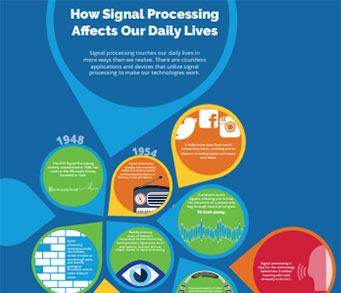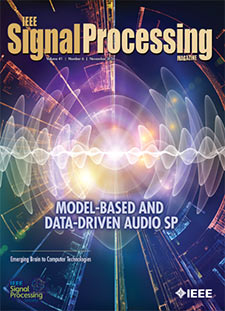- Our Story
- Publications & Resources
- Publications & Resources
- Publications
- IEEE Signal Processing Magazine
- IEEE Journal of Selected Topics in Signal Processing
- IEEE Signal Processing Letters
- IEEE Transactions on Computational Imaging
- IEEE Transactions on Image Processing
- IEEE Transactions on Information Forensics and Security
- IEEE Transactions on Multimedia
- IEEE Transactions on Signal and Information Processing over Networks
- IEEE Transactions on Signal Processing
- IEEE TCI
- IEEE TSIPN
- Data & Challenges
- Submit Manuscript
- Guidelines
- Information for Authors
- Special Issue Deadlines
- Overview Articles
- Top Accessed Articles
- SPS Newsletter
- SigPort
- SPS Resource Center
- Publications FAQ
- Blog
- News
- Dataset Papers
- Conferences & Events
- Community & Involvement
- Professional Development
- For Volunteers
- Information for Authors-OJSP
-
Home
Conferences Events IEEE Signal Processing Magazine IEEE SPL Article IEEE TIFS Article IEEE TMM Article IEEE TSP Article Jobs in Signal Processing Lectures Machine Learning Seasonal Schools Signal Processing News SPM Article SPS Distinguished Lectures SPS Newsletter Article SPS Webinar SPS Webinars SPS Webinar Series Webinar webinars
-
Our Story
What is Signal Processing?

The technology we use, and even rely on, in our everyday lives –computers, radios, video, cell phones – is enabled by signal processing. Learn More » -
Publications & Resources
-
SPS Resources
- Signal Processing Magazine The premier publication of the society.
- SPS Newsletter Monthly updates in Signal Processing
- SPS Resource Center Online library of tutorials, lectures, and presentations.
- SigPort Online repository for reports, papers, and more.
- SPS Feed The latest news, events, and more from the world of Signal Processing.
-
SPS Resources
-
Conferences & Events
-
Community & Involvement
-
Membership
- Join SPS The IEEE Signal Processing Magazine, Conference, Discounts, Awards, Collaborations, and more!
- Chapter Locator Find your local chapter and connect with fellow industry professionals, academics and students
- Women in Signal Processing Networking and engagement opportunities for women across signal processing disciplines
- Students Scholarships, conference discounts, travel grants, SP Cup, VIP Cup, 5-MICC
- Young Professionals Career development opportunities, networking
- Get Involved
-
Technical Committees
- Applied Signal Processing Systems
- Audio and Acoustic Signal Processing
- Bio Imaging and Signal Processing
- Computational Imaging
- Image Video and Multidimensional Signal Processing
- Information Forensics and Security
- Machine Learning for Signal Processing
- Multimedia Signal Processing
- Sensor Array and Multichannel
- Signal Processing for Communication and Networking
- Signal Processing Theory and Methods
- Speech and Language Processing
- Technical Working Groups
- More TC Resources
-
Membership
-
Professional Development
-
Professional Development
- Signal Processing Mentorship Academy (SigMA) Program
- Micro Mentoring Experience Program (MiME)
- Distinguished Lecturer Program
- Distinguished Lecturers
- Distinguished Lecturer Nominations
- Past Lecturers
- Distinguished Industry Speaker Program
- Distinguished Industry Speakers
- Distinguished Industry Speaker Nominations
- Industry Resources
- IEEE Training Materials
- Jobs in Signal Processing: IEEE Job Site
-
Career Resources
- SPS Education Program Educational content in signal processing and related fields.
- Distinguished Lecturer Program Chapters have access to educators and authors in the fields of Signal Processing
- Job Opportunities Signal Processing and Technical Committee specific job opportunities
- Job Submission Form Employers may submit opportunities in the area of Signal Processing.
-
Professional Development
-
For Volunteers
-
For Board & Committee Members
- Board Agenda/Minutes* Agendas, minutes and supporting documentation for Board and Committee Members
- SPS Directory* Directory of volunteers, society and division directory for Board and Committee Members.
- Membership Development Reports* Insight into the Society’s month-over-month and year-over-year growths and declines for Board and Committee Members
-
For Board & Committee Members
Popular Pages
Today's:
- Information for Authors
- IEEE Transactions on Information Forensics and Security
- (ICME 2026) 2026 IEEE International Conference on Multimedia and Expo
- IEEE Transactions on Multimedia
- (ASRU 2025) 2025 IEEE Automatic Speech Recognition and Understanding Workshop
- IEEE Journal of Selected Topics in Signal Processing
- IEEE Signal Processing Letters
- Signal Processing Cup
- IEEE Transactions on Image Processing
- Submit a Manuscript
- Publications & Resources
- IEEE Transactions on Audio, Speech and Language Processing
- (ICIP 2026) 2026 IEEE International Conference on Image Processing
- Information for Authors-SPL
- Conference Call for Papers
All time:
- Information for Authors
- Submit a Manuscript
- IEEE Transactions on Image Processing
- IEEE Transactions on Information Forensics and Security
- IEEE Transactions on Multimedia
- IEEE Transactions on Audio, Speech and Language Processing
- IEEE Signal Processing Letters
- IEEE Transactions on Signal Processing
- Conferences & Events
- IEEE Journal of Selected Topics in Signal Processing
- Information for Authors-SPL
- Conference Call for Papers
- Signal Processing 101
- IEEE Signal Processing Magazine
- Guidelines
Last viewed:
- IEEE JSTSP Special Series on Artificial Intelligence for Smart Agriculture
- Members
- Speech and Language Processing
- (ASRU 2025) 2025 IEEE Automatic Speech Recognition and Understanding Workshop
- Members
- Conferences
- Technical Committees
- Information for Authors
- Adaptive Bayesian Radio Tomography
- Conferences & Events
- 2025 Picture Coding Symposium (PCS)
- IEEE Transactions on Information Forensics and Security
- (ICME 2025) 2025 IEEE International Conference on Multimedia and Expo
- Signal Processing Cup
- Distinguished Lecturer Program
Jorge Iván Núñez Sánchez (Arizona State University), “Development and Applications of a Multispectral Microscopic Imager for the In Situ Exploration of Planetary Surfaces” 2012
You are here
Newsletter Menu
Newsletter Categories
Top Reasons to Join SPS Today!
1. IEEE Signal Processing Magazine
2. Signal Processing Digital Library*
3. Inside Signal Processing Newsletter
4. SPS Resource Center
5. Career advancement & recognition
6. Discounts on conferences and publications
7. Professional networking
8. Communities for students, young professionals, and women
9. Volunteer opportunities
10. Coming soon! PDH/CEU credits
Click here to learn more.
News and Resources for Members of the IEEE Signal Processing Society
Jorge Iván Núñez Sánchez (Arizona State University), “Development and Applications of a Multispectral Microscopic Imager for the In Situ Exploration of Planetary Surfaces” 2012
Jorge Iván Núñez Sánchez (Arizona State University ), “Development and Applications of a Multispectral Microscopic Imager for the In Situ Exploration of Planetary Surfaces”, Advisor: Jack D. Farmer, 2012.
Future robotic and human missions to the Moon and Mars will need in situ capabilities to characterize the mineralogy of rocks and soils within a microtextural context. Such spatially-correlated information is considered crucial for correct petrogenetic interpretations and will be key observations for assessing the potential for past habitability on Mars. These data will also enable the selection of the highest value samples for further analysis and potential caching for return to Earth. The Multispectral Microscopic Imager (MMI), similar to a geologist's hand lens, advances the capabilities of current microimagers by providing multispectral, microscale reflectance images of geological samples, where each image pixel is comprised of a 21-band spectrum ranging from 463 to 1735 nm. To better understand the capabilities of the MMI in future surface missions to the Moon and Mars, geological samples comprising a range of Mars-relevant analog environments as well as 18 lunar rocks and four soils, from the Apollo collection were analyzed with the MMI. Results indicate that the MMI images resolve the fine-scale microtextural features of samples, and provide important information to help constrain mineral composition. The MMI was also deployed as part of the 2010 ILSO-ISRU field test on the slopes of Mauna Kea, Hawaii and inside the GeoLab as part of the 2011 Desert RATS field test at the Black Point Lava Flow in northern Arizona to better assess the performance of the MMI under realistic field conditions (including daylight illumination) and mission constraints to support human exploration. The MMI successfully imaged rocks and soils in outcrops and samples under field conditions and mission operation scenarios, revealing the value of the MMI to support future rover and astronaut exploration of planetary surfaces.
For details, please visit here or contact the author.
Open Calls
| Nomination/Position | Deadline |
|---|---|
| Call for proposals: 2027 IEEE Conference on Artificial Intelligence (CAI) | 1 October 2025 |
| Meet the 2025 Candidates: IEEE President-Elect | 1 October 2025 |
| Take Part in the 2025 Low-Resource Audio Codec (LRAC) Challenge | 1 October 2025 |
| Call for Nominations for the SPS Chapter of the Year Award | 15 October 2025 |
| Call for Papers for 2026 LRAC Workshop | 22 October 2025 |
| Submit a Proposal for ICASSP 2030 | 31 October 2025 |
| Call for Project Proposals: IEEE SPS SigMA Program - Signal Processing Mentorship Academy | 2 November 2025 |
Education & Resources
Research Opportunities
Technical Committee News
New Books
Publications News
Conferences & Events
Society News
- Call for Nominations: 2014 Distinguished Lecturers
- Call for Nominations – TAB Hall of Honor
- Call for Nominations: IEEE Medals and Recognitions: deadline 1 July
- IEEE-USA Awards and Recognition
- Upcoming Distinguished Lectures – April 2011
- Division Director Moura inducted into the U.S. National Academy of Engineering
SPS Social Media
- IEEE SPS Facebook Page https://www.facebook.com/ieeeSPS
- IEEE SPS X Page https://x.com/IEEEsps
- IEEE SPS Instagram Page https://www.instagram.com/ieeesps/?hl=en
- IEEE SPS LinkedIn Page https://www.linkedin.com/company/ieeesps/
- IEEE SPS YouTube Channel https://www.youtube.com/ieeeSPS
Home | Sitemap | Contact | Accessibility | Nondiscrimination Policy | IEEE Ethics Reporting | IEEE Privacy Policy | Terms | Feedback
© Copyright 2025 IEEE - All rights reserved. Use of this website signifies your agreement to the IEEE Terms and Conditions.
A public charity, IEEE is the world's largest technical professional organization dedicated to advancing technology for the benefit of humanity.








